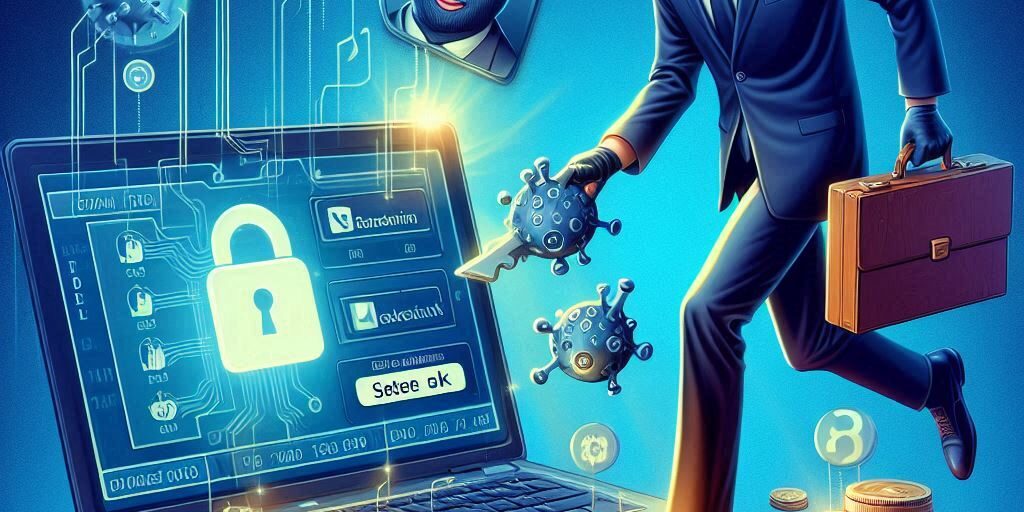Secure bank accounts after laptop virus attack with these essential steps to protect your finances. A laptop virus can severely compromise your personal information, including sensitive banking details. Cybercriminals use various techniques, such as malware, ransomware, and keyloggers, to access financial accounts. If your device is infected, it’s crucial to take immediate action to secure your bank account and prevent further cyber threats. This guide outlines ten essential steps to protect your finances after a virus attack.
Table of Contents
ToggleChange Your Bank Account Password Immediately
1. Why It’s Crucial to Change Your Password
Viruses with keylogging capabilities can steal your banking credentials as you type. Changing your password instantly renders any compromised information invalid.
2. How to Update Your Password
- Use a Secure Device: Ensure you log in from a device unaffected by the virus.
- Navigate to Security Settings: Access the account settings on your banking portal or app.
- Create a Strong Password: Use a combination of uppercase and lowercase letters, numbers, and symbols.
- Example: Avoid predictable patterns like “Password123” or dates of birth.
- Enable Password Managers: Consider tools like LastPass or Dashlane for generating and storing complex passwords securely.
Notify Your Bank of the Virus Attack
1. Why Prompt Notification is Critical
Informing your bank ensures proactive monitoring for fraudulent activity and enables additional security measures to protect your account.
2. Steps to Contact Your Bank
- Reach Customer Service: Call the helpline provided on your bank’s official website.
- Explain the Situation: Mention the virus attack and express concern over unauthorized access.
- Request Additional Security:
- Enable real-time transaction alerts.
- Ask about fraud protection or temporary account freezing.
Enable Two-Factor Authentication (2FA)
1. How 2FA Enhances Security
Two-factor authentication adds an extra verification step, making it more challenging for hackers to access your account, even with stolen passwords.
2. Steps to Enable 2FA
- Access Security Settings: Log in to your online banking account and go to the security section.
- Choose a Verification Method: Select SMS codes, authentication apps (e.g., Google Authenticator), or biometric verification.
- Follow Setup Instructions: Complete the process as guided by your bank to activate 2FA.
Install and Run Antivirus Software
1. Why Antivirus Software is Essential
Antivirus programs detect, isolate, and remove malware, ensuring your laptop is free of any lingering threats after the attack.
2. Steps to Use Antivirus Software
- Select Reliable Software: Choose trusted options like Norton, Bitdefender, or McAfee.
- Perform a Full System Scan: Let the antivirus check for viruses, malware, or other threats.
- Regular Updates: Keep the software updated to ensure it can detect and eliminate the latest threats.
Monitor Your Bank Accounts Regularly
1. The Importance of Regular Monitoring
Hackers often test access with small, seemingly insignificant transactions. Spotting these early can prevent significant financial loss.
2. Tips for Effective Monitoring
- Set Up Alerts: Opt for SMS or email notifications for every transaction.
- Check Weekly: Log in to your banking app or portal at least once a week to review activity.
- Act Immediately: Report any unusual or unauthorized activity to your bank.
Avoid Using Public Wi-Fi for Banking
1. Risks of Public Wi-Fi
Unsecured public Wi-Fi networks are a hotspot for hackers who can intercept sensitive data during your online sessions.
2. Safe Banking Practices
- Use Mobile Data: Avoid connecting to public Wi-Fi while accessing financial accounts.
- Utilize VPN Services: Encrypt your internet traffic with a Virtual Private Network for added security.
- Disable Auto-Connect: Ensure your device doesn’t automatically connect to open networks.
Perform Routine Backups of Your Data
1. Why Regular Backups are Crucial
Virus attacks can corrupt essential files. Routine backups ensure you can restore lost or damaged data.
2. Steps to Secure Your Backups
- Cloud Storage: Use platforms like Google Drive or Dropbox.
- External Devices: Save backups to USB drives or external hard disks.
- Automate the Process: Enable automatic backups to minimize manual effort.
Use Only Secure and Official Banking Apps or Websites
1. Identifying Secure Platforms
Hackers frequently set up fake apps or phishing websites to steal login credentials. Verifying authenticity is vital.
2. Steps to Ensure Security
- Look for HTTPS: Ensure the website URL starts with “https://” and displays a padlock icon.
- Avoid Email Links: Don’t click on banking links received via unsolicited emails.
- Use Official Sources: Download apps directly from Google Play Store or Apple App Store.
Update All Other Passwords After the Virus Attack
1. Why Updating Other Passwords is Necessary
A virus may target multiple accounts, especially those linked to your email or financial information.
2. Password Update Best Practices
- Start with Email: Change the password for your primary email account first, as it’s often the recovery point for other accounts.
- Use a Password Manager: Generate and store unique passwords safely.
- Prioritize Sensitive Accounts: Focus on updating passwords for financial or personal accounts.
Educate Yourself About Cybersecurity
1. Importance of Cybersecurity Awareness
Understanding potential threats empowers you to prevent future attacks and adopt safe online habits.
2. Cybersecurity Best Practices
- Keep Systems Updated: Regularly update your operating system, antivirus software, and applications.
- Avoid Suspicious Files: Never download attachments or click links from unknown sources.
- Review Account Activity: Develop the habit of scanning for unusual behavior in all your accounts.
Conclusion: Take Action Now to Protect Your Bank Account
A laptop virus attack can have far-reaching consequences for your finances. By implementing these 10 steps, you can minimize risks, enhance security, and regain control over your bank accounts.
If you’ve fallen victim to a virus attack and need professional assistance, Perth Computer Experts are here to help. From virus removal to robust digital security solutions, our team is dedicated to safeguarding your devices and personal information. Contact us today for expert support and peace of mind!




